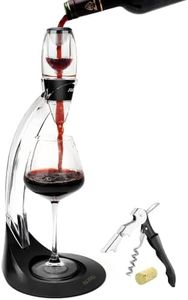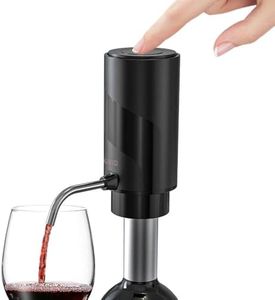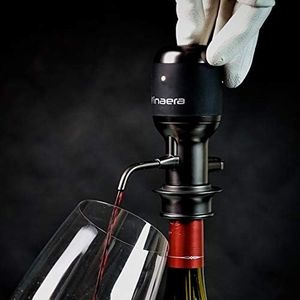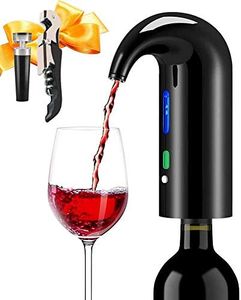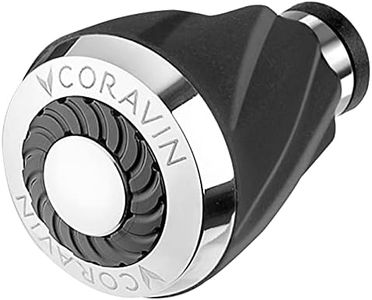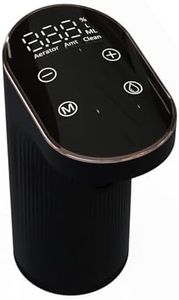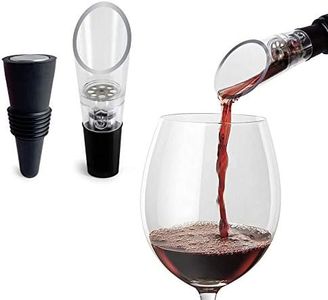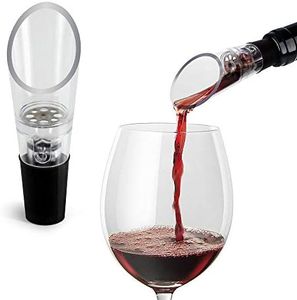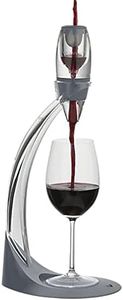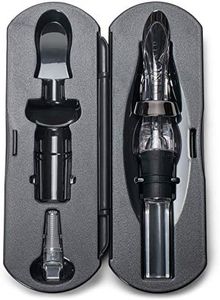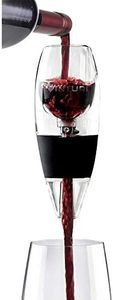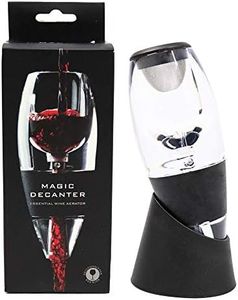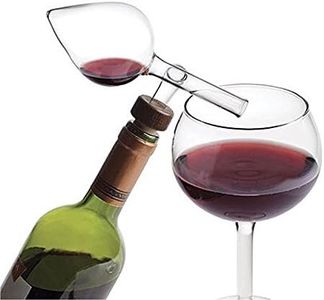We Use CookiesWe use cookies to enhance the security, performance,
functionality and for analytical and promotional activities. By continuing to browse this site you
are agreeing to our privacy policy
10 Best Wine Aerators
From leading brands and best sellers available on the web.Buying Guide for the Best Wine Aerators
Choosing the right wine aerator can really enhance your wine-drinking experience. An aerator is a tool that helps your wine breathe, improving its flavor and aroma by exposing it to air. When picking an aerator, it's important to think about how, when, and where you'll use it, as well as the types of wine you enjoy most. Understanding the key features of wine aerators will help you narrow down your options and select one that fits your needs perfectly.Type of AeratorThe type of aerator refers to the design and method it uses to introduce air to the wine. This can include handheld, in-bottle, or decanter-style aerators. Handheld aerators are used by pouring wine through them as you serve, making them quick and portable, great for single servings or small gatherings. In-bottle aerators are attached directly to the bottle, offering convenience and minimal mess, which is helpful for casual use. Decanter-style aerators are built into wine decanters and are best for serving multiple people or when you want to enhance the wine’s flavor over a longer period. Your choice depends on whether you want speed, convenience, or a more traditional approach to aerating wine.
Material QualityMaterial quality matters because it affects durability, how easy the aerator is to clean, and whether it affects the taste of your wine. Aerators are generally made from plastic, silicone, or glass. Plastic models are lightweight and inexpensive but can sometimes carry odors or stain over time. Silicone is flexible and generally easy to clean, making it a good choice for frequent use. Glass aerators are more elegant and don’t interact with the wine, but they are more fragile and require careful handling. Think about how often you’ll use the aerator and whether style or sturdiness is more important for you.
Ease of CleaningThis spec refers to how simple it is to wash and maintain your aerator. Some aerators have complex designs or small parts that can trap wine residue and make cleaning tricky. Others are dishwasher safe, which is great for people who use the aerator often or want minimal maintenance. If you prefer convenience or will use the aerator frequently, aim for models that come apart easily or are labeled as dishwasher safe. For occasional use, a simple rinse by hand might be sufficient.
Pouring Speed and Flow ControlPouring speed and flow control determine how quickly wine passes through the aerator and how much air it can absorb on the way. Some aerators have adjustable flow settings that let you control how much air is mixed in, helping to tailor the aeration process for different wine types. Fast-flow designs are great for quick servings but might not deliver as nuanced aeration. Slower, adjustable options allow more control and can improve flavors for older or more delicate wines. If you drink many different types of wine, an aerator with flow control gives you flexibility; if you mostly enjoy young reds and want speed, a simple, fast-flow model will suffice.
Compatibility with Bottle TypesCompatibility tells you whether the aerator will fit snugly in various wine bottle types. Some are universal and easily fit any standard wine bottle, while others may only work with certain bottle shapes or sizes. If you often buy wine from a range of regions or brands, a universally compatible aerator is best to ensure you won’t run into fitting issues. If you tend to stick with specific types or brands with standard bottles, you might not need to worry as much about this feature.
